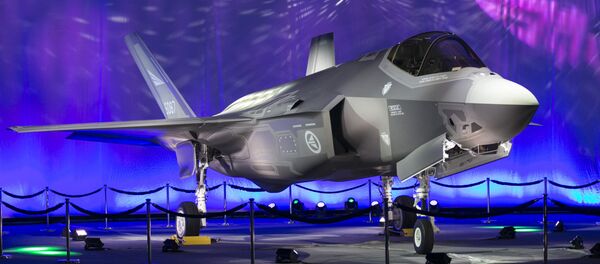For the first time since the Second World War, foreign troops will be allowed to be stationed on Norwegian soil: some 330 US Marines are due to be deployed on a rotational basis at the Vaernes military base — about 1,000 kilometers (600 miles) from the Norweigian-Russian border — starting in January.
"The United States is our most important ally and we have a near bilateral relationship that we wish to develop. The defense of Norway is dependent on allied reinforcement and it is crucial for Norwegian security that our allies get the knowledge required to operate in Norway, together with Norwegian forces," Defense Minister Ine Eriksen Soereide said in an official statement, as quoted by Reuters.
Despite being a founding member state of NATO, Norway pledged its commitment not to host foreign troops in 1949. The Norwegian Defense Ministry's willingness to allow the deployment of US Marines on Norway's territory has sparked criticism from the opposition parties.
"This is not a good signal to send. We should rather reinforce our national defense and not aim for some form of permanent presence by US troops," Audun Lysbakken, the leader of the small opposition Socialist Left party, told public broadcaster NRK, as quoted by Reuters.
Citing the Norwegian state-owned broadcaster NRK, Filip Johansson of Swedish media outlet Expressen highlighted that Oslo's decision to invite US Marines has also triggered concerns within the country's government.
The issue was discussed in the Norwegian Parliament Foreign Affairs and Defense Committee on Monday evening.
"We must rather help to calm down the Russian bear," Christian Tybring-Pike, the Progress Party defense spokesperson, told NRK, as quoted by Johansson.
For his part, retired commander Jacob Børresen warned that the deployment of US troops in Norway could send "negative signals eastward."
"What we risk is that the North will be a confrontation area again," Børresen told NRK, as cited by the Swedish journalist. The retired commander assumed that in the eyes of Moscow, the move indicates a serious shift in Oslo's security policy with a greater emphasis on deterrence.
However, the opposition, comprising the Socialist Left, the Center Party and the Liberal Party, has signaled its protest against the costly military buildup. The parties have called attention to the fact that the price tag for the US-made fighter jets will reach up to $8.5 billion, while the total lifetime expenditure is likely to mount to $31.5 billion.
However, what is further disturbing Norwegian politicians is the country's growing dependence on the US and NATO as guarantors of Norway's national security.
Last Monday NRK cited Liberal leader Trine Skei Grande, who assumed that Oslo is seeking to "outsource" the country's national security responsibilities to Washington.
"What the government is doing now is outsourcing the responsibility for our security to the US Marines," Grande noted as quoted by the media outlet.
Meanwhile, Oslo's recent moves have received high praise from Washington.
He underscored that a US military presence in Norway "will increase NATO's ability to rapidly aggregate and deploy forces in northern Europe."
The media outlet claimed that the US military buildup in Norway has come as a response to Russia's "intervention" in Eastern Europe and "tensions about Russia's posture."
Back in March 2016 Norwegian-led NATO joint military drills dubbed Exercise Cold Response 2016 took place "over large areas of Norway" bringing together troops and military assets from 12 Allied nations and 2 Partner nations, the bloc's official website reported.
The exercise was part of a series of NATO military drills kicked off by the alliance in close proximity to Russia's borders in 2016.




